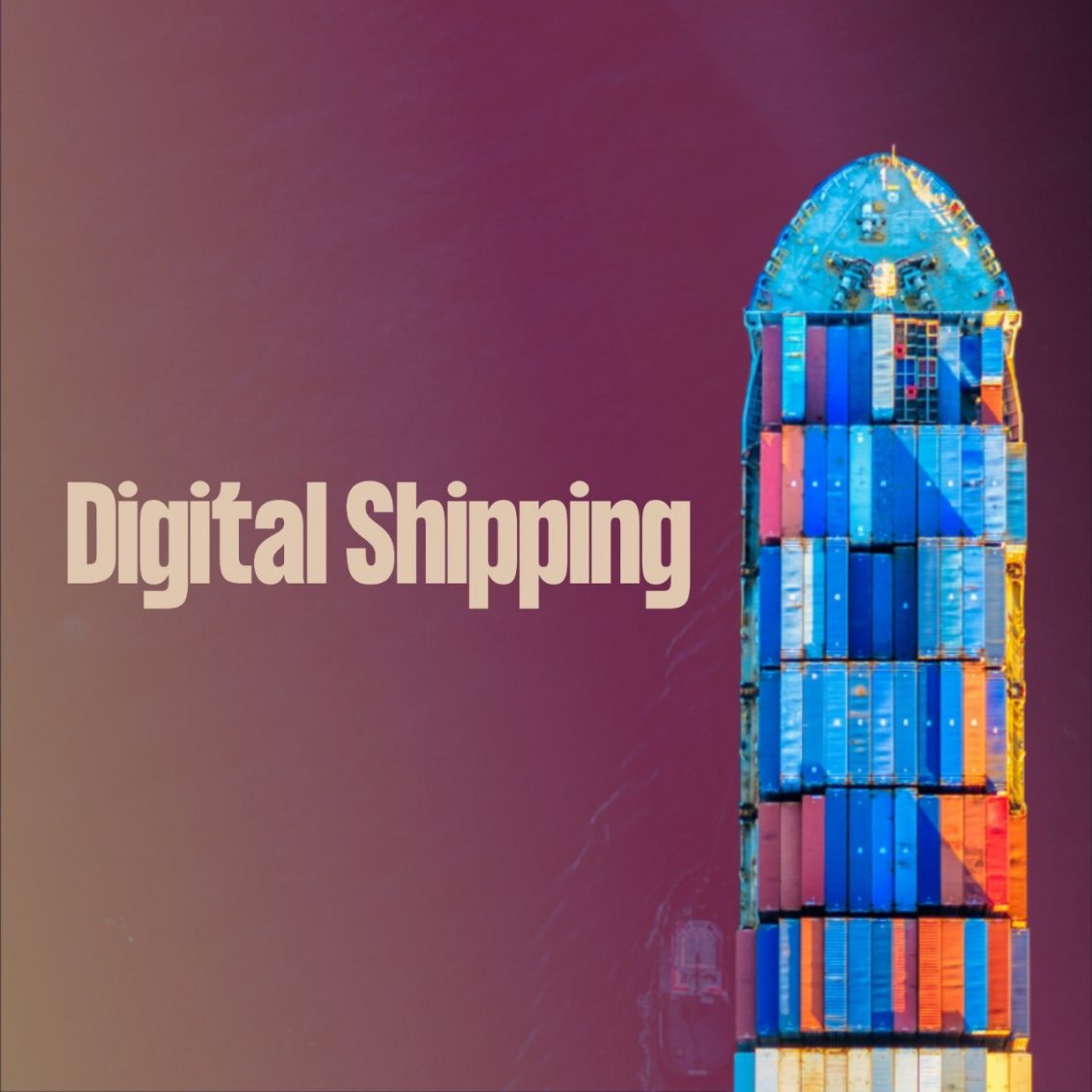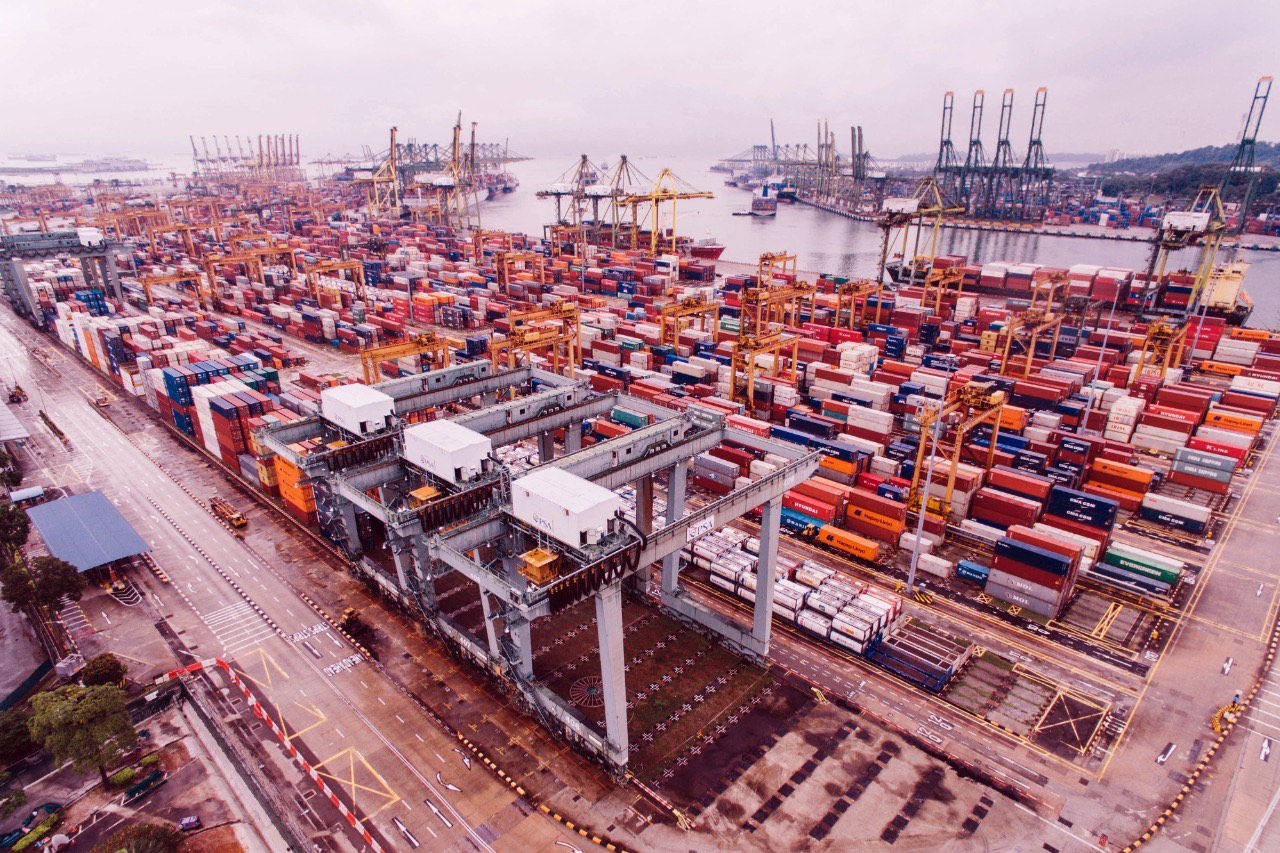The Digital Transformation of the Shipping Industry

Maritime shipping is the backbone of international trade and the manufacturing supply chain, as nearly 80% of the world’s merchandise trade by volume is transported by sea. Some of the shipping practices of the 1960s and ‘70s are still being used today, although more and more digital solutions are emerging in this sector, aiming to ultimately benefit customers who rely on the shipping industry.
The early days of the transformation process
Maritime shipping is the backbone of international trade and the manufacturing supply chain, as nearly 80% of the world’s merchandise trade by volume is transported by sea. Some of the shipping practices of the 60s and 70s are still being used today, although more and more digital solutions are emerging in this sector aiming to ultimately benefit customers who rely on the shipping industry.
At the end of 2019, conventional wisdom in the container shipping supply chain was that the industry was lagging severely behind in terms of digitalization when compared to other industries. However, when the pandemic shut down offices across the globe in early 2020, it became clear that the industry was more digitally enabled than it had been given credit for.
This was particularly apparent from March to May 2020 when many shipping lines and logistics companies had their physical offices closed and most employees shifted to working from home. Despite this, bookings were still being made, freight documents were issued, and cargo was moved. Of course, there were problems and the transition was not always smooth, however, almost 40 million TEU of cargo got shipped during these three months alone.
This transition was instant, global and unexpected – and it showed that the digitalization of the supply chain was indeed well implemented and that it allowed this sudden shift to be handled with greater ease.
The pandemic fallout from 2020-2022 led to a further acceleration of this trend.
What is the digital transition?
One of the most important and time-consuming processes in the shipping industry is the freight-quoting process, which was done manually by email by a majority of service providers and carriers. Therefore, one of the main aims of the industry was to automate the freight procurement process where possible.
Carriers have been rapidly pushing self-service tools for procuring and buying freight online. The two fastest-growing examples of this are seen with Maersk and Hapag-Lloyd. Prior to the pandemic, only a small percentage of freight was procured purely online. The latest data shows that, in Q2 2022, Maersk Spot reached a 66% conversion rate. For Hapag-Lloyd, nearly 23% of their total bookings were handled online through their Quick Quotes – far ahead of their original strategic target of 15% by the year 2023. Most major carriers have launched similar types of online products over the past 24 months, and freight forwarders are also increasing their efforts in this arena.
Another digital element is typically labeled “transparency.” In essence, this relates to information pertaining to the status of the freight movement at any given point in time. To a significant degree, this still relies on data – often through technologically ancient EDI connections – from the carriers’ back-end systems, and the accuracy and quality of the data is not always good.
As a consequence, an increasing number of tools and services are being launched to assist in the creation of transparency. Some of these rely on AIS data from the vessels and use Artificial Intelligence to provide more accurate predictions in relation to expected arrival times. Such tools are now available from both independent technology providers as well as from some freight forwarders offering this as a service to their clients. Sensor technology has found its way into the reefer containers in the form of remotely accessible real-time measurements of critical elements such as atmosphere and temperature conditions in addition to location, allowing these containers to join the Internet of Things (IoT), and we are at the beginning of the next push whereby the technology will be spread to dry containers as well.

Unfolding digital development in 2023-2024
The persistent service disruptions and bottlenecks plaguing the supply chain over the past two years have also revealed the need for additional developments in digital shipping, and some of these elements will unfold during 2023-24.
The path for online trackers on all containers is to some degree already preordained as Hapag-Lloyd has now commenced the installation of such trackers on their entire equipment fleet. This establishes a path whereby shippers will increasingly see access to such information as a “must have” service from carriers, and all major carriers are expected to follow suit in the coming years.
The competitive battle to sell cargo online will intensify, and the market should be expected to essentially split into two different parts. One part of the market relates to cargo moving on contracts with longer duration between shippers and carriers – these contracts will be governed by digital systems, automatically taking into account any non-conformance to contract from either party – they will be negotiated and agreed offline. The other part is the spot market, which will become almost entirely digital.
There will be a strong push to establish more automated systems in relation to detecting and documenting actions throughout the supply chain in order to automatically assign culpability in cases where penalties must be paid. It is not sufficient to have the data on where a container is “stuck” – it is also necessary to have data documenting who is responsible for the situation. This will become particularly driven by the need in the United States to document the applicability of detention and demurrage charges as set out in the new Ocean Shipping Reform Act. As such, the digital developments unfolding throughout 2023-24 will, to some degree, be tactical in the sense that they will be practical solutions to handle the coming market downturn as well as new legislative requirements.
The future of logistics industry
Industry developments for 2024 and beyond will be set in motion prior to 2024, and some are already in progress, but they will only begin to make their mark in the longer term.
A key element is the establishment of digital standards allowing all stakeholders to seamlessly exchange data. This work was initiated prior to the pandemic by the establishment of the Digital Container Shipping Association (DCSA), which has established a series of key standards for the industry with more to come. This is a critical base layer to have in place going forward, and it is well underway. Presently the key issue is not DCSA’s ability to get carriers to agree on standards, which has already progressed well. The most critical challenge is for the carriers themselves to implement the agreed-upon standards within their own systems, and this is taking quite some time.
While the next one to two years will focus on making data available to all relevant stakeholders, the period beyond 2024 is when we will begin to see more widescale applications of how to truly leverage the information available. Focus will shift from being able to see what is going on and who is responsible to pre-emptively forecasting problems which have not yet occurred and either preventing the problems or at the very least mitigating the impact or reducing the risk of said problems.
This will also be the transition point where the commercial models in the shipping industry will slowly begin to shift. As not only data availability but also the ability to automatically exchange data across all relevant stakeholders becomes the new normal, the movement of freight from point A to point B – including the “movement” of any and all relevant information and documentation – will be taken for granted. The customer will have an expectation that they do not need to do anything as long as everything goes according to plan. But that also leads down a path where a larger part of the freight movement will be seen as a commodity – indistinguishable across the different providers as long as everything goes according to plan.

This is where successful freight providers will shift their business focus. The competitive advantage will shift to two core elements, critically linked to digital shipping.
The first element is the ability to use data to forecast problems. Forecasts are used strategically when designing networks and products to reduce the structural risk of problems occurring, and used tactically to predict problems in the nearer-term future and either avert problems or flag issues for exception handling.
This then leads to the second element: exception handling. This is a combination of leveraging data to quickly identify alternative options for the customers and the knowledge of customer service staff to help customers in these situations. Simply put: In a digital supply chain, the most important competitive parameter is the quality of customer service staff to assist when things do not go according to plan. It is this ability that will increase the value of the promise customers associate with a particular brand of shipping company, and this is, in turn, what can justify a premium price.
In a nutshell, the more digital the industry gets, the more important it becomes to have very skilled people.
Decarbonization will be yet another element that will benefit from the uptick of data availability. As new zero-carbon vessels are gradually phased into the fleet, it becomes critical to be able to clearly document exactly how many “slots” a carrier produces are truly zero-carbon, since otherwise there can be a significant risk of greenwashing whereby more zero-carbon “slots” are being sold than the physical reality on the ground.
The major obstacles ahead
There are a number of obstacles on the path toward digitalization. None of them are insurmountable, but they can act as a “brake” on development.
One element is the pace with which the carriers are implementing digital solutions – and this pace is to some degree determined by the internal ability to handle such transformation projects. A digital transformation is not a simple matter of building or buying an IT system. It requires detailed planning of the necessary changes to business processes, and such changes require people to change the way they are working. In other words, this is a leadership challenge and not an IT challenge – and changing ingrained work habits, and potentially the very culture of a company, takes time.
The transformation also requires customers to change the way they interact with the shipping line. There are clearly progressive customers who are well ahead of the shipping lines – and these are the customers providing a strong “push” for the transformation. But there are also many customers who themselves are in the early phases of their own digital transformation of the supply chain, and this means that the uptake of new automated tools can be slowed simply because not all customers are ready yet.
The final challenge is the element of cybersecurity. It is essentially a certainty that we will see multiple examples in the coming years of successful cyberattacks on the supply chain – just as we have seen it in recent years. This should not be used as an argument to stall the digital transformation, but it should be seen as a sign that security must be baked into every solution from the start and not merely added on as an afterthought at the end of a project.
Implementing more digital solutions in the industry could help tackle the current issues and bottlenecks in the shipping sector and the other potential arising issues, meanwhile maintaining a robust and resilient supply chain.
Implementing more technology and digital solutions in the industry could help tackle the current issues and bottlenecks in the shipping sector and other potential arising issues, while maintaining a robust and resilient supply chain.
Strathsquare is a seed stage project initiator that provides required resources to entrepreneurs and innovators. We are driven by a sense of urgency to transition away from unsustainable technologies and processes, we believe that what we do should have a genuinely positive impact on society and our environment.
If you have an innovative idea
We are committed to supporting innovators who have the potential to make businesses more sustainable and for all.



